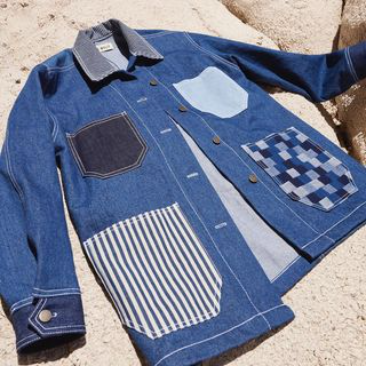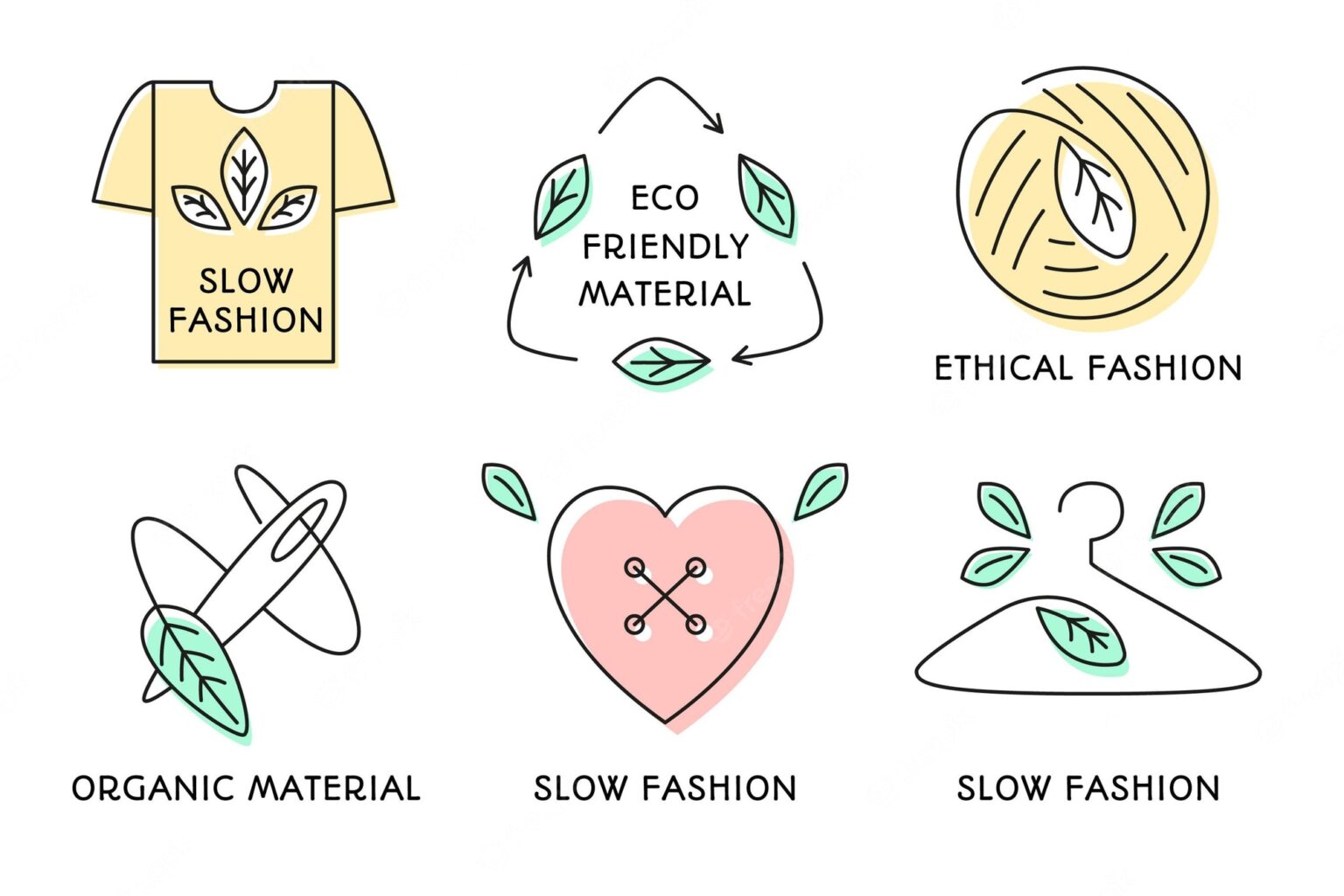Content submitted by Sandra Callies, AIA NCARB
Instructor of Architecture at South Dakota State University
A more deliberate, material and longevity-focused take on fashion and clothing design is getting recognition from earth-conscious consumers as finally getting it right! Since this topic is highlighted typically in the month of April for Earth Day, I figured I’d use this platform and chime in about a topic I am passionate about: Slow Fashion.
Slow fashion is making great advances towards sustainability that other professions are taking notice! Architecture has started being more adaptable to reusing materials, but still have a long way to go. How often have you noticed a building being torn down and none of the materials were gathered for the landfill?
There are currently ten restore options around the state of South Dakota focusing on reusing residential materials. Commercial Architecture focuses on using new materials only. How can we begin to use Slow Fashion as a precedent for reusing construction materials?
To better understand, Slow Fashion is simply the action of both companies and consumers to work against the dominance of Fast Fashion in the marketplace. Fast Fashion manufacturing uses poor quality materials to assemble clothing that is often not usable beyond one or two wears. Companies produce massive amounts of these items at a low cost, and as a result, much of the production is discarded. Recently highlighted by National Geographic, an enormous amount of fast fashion by the world’s favorite brands has been abandoned in Chile’s Atacama Desert. As seen in these images, there are mountains of clothes creating a new landscape within the canyons.
https://www.nationalgeographic.com/environment/article/chile-fashion-pollution
Materials used in clothing manufacture matter/make a difference. Traditionally, denim is 100 percent cotton, however, over the last 20 plus years, many people have gotten used to wearing stretch denim. This contains one or two percent elastane (generic name for Lycra or spandex), which is a synthetic fiber made from Polyurthane, a type of plastic! The major issue with elastane is that it is essentially plastic, and with how consumers typically launder their clothing, it will eventually stretch out and become an unusable textile, again, destined for the landfill.
So, what does “Slow Fashion” look like? I would like to highlight a small clothing brand in Los Angeles, Lykke Wullf. Many of their clothes have a sustainable factor that is essential to Slow Fashion. The first aspect of Slow Fashion is using quality materials that last for many years and many wears. Lykke Wullf focuses on denim as a classic wardrobe staple. This Denim is classic cotton!

A secondary aspect of Slow Fashion is using materials that have already been made. There is a warehouse in Los Angeles where designers can choose from decades old, discarded rolls of fabric, or “old stock”. Lykke Wullf often makes use of these types of materials to design and construct their clothing. And consumers often appreciate the vintage feel of these items and consider them special pieces in their wardrobes. The fabric was destined for the landfill, but Lykke Wullf and other designers are finding creative ways to use it. We understand that using high quality materials that last through many washes and trends leads to slow fashion. Reusing fabrics that have already been produced limits clothing manufacturers’ carbon footprint, which is another positive effect of the slow fashion ethic.
Another avenue of slow fashion is providing a resale option for consumers’ clothing to a specific brand audience. A website called Treet.co offers clothing brands a direct way for their buyers to sell directly to another buyer interested in that brand. The seller is then provided the option to get cash back or credit toward the brand again. It is a great tool for a buyer to find gently used items of the brand at a discounted price if they can’t afford to buy brand new.
“Up-cyclers” is another keyword in sustainability. In fashion today, midcentury quilts that our grandmothers made from their own clothes, are now being up cycled from unused quilts back into clothes! Psychic Outlaw from Austin, Texas is well known for resewing quilts into jackets, overalls, dresses, and even corsets. Another up-cycle example, New York designer the Series collects granny square blankets and upcycles them into scarves, shirts, head warmers and many more wearable items. They were even featured in Vogue this last year as “best street style.”
The cost of clothing items from a brand using these slow fashion tactics are generally higher than average department store costs. Since major manufacturing of clothing, decreased costs of transportation and cheap labor add to very cheap prices at clothing stores. The cheap materials are assembled by cheap labor and put into stores to be worn for an average of five times is not a sustainable future. Some of these slow fashion brands factor in “cost per wear” onto their tags. If you buy a pair of denim jeans for $250 and you can get 50 wears out of a clothing item, the cost is $5 per wear! Even less the more you wear them! The European model of buying clothes is spending more on fewer seasonal items that will last much longer. Transitioning to Slow Fashion may take a couple of years, but you will eventually reach a point where you have an amazing wardrobe. The cost ends up being roughly the same, but the items aren’t going into the trash.
So how does a consumer go about putting the brakes on their fast fashion tendencies? Consider your wardrobe and when you buy a new item. Commit to wearing an item at least 30 times. If you don’t think the quality of the item will last at least 30 washes, then don’t buy the item!
A few more tips: Look for brands and shops that are transparent when it comes to manufacturing information (Where they source their materials, what materials they use, if they produce in small batches, limited waste practices, and how they are supporting their workers). More brands are starting to market sustainable products; however, they aren’t doing much to share how so or the behind-the-scenes on their manufacturing and sourcing.
Takeaways: Focus on buying less, instead of buying many items on sale, find the piece that checks the “sustainable boxes” and save for it. It will feel like a lot at first but remember this is an investment in a clothing item that will last a lifetime, support others, and the environment, and have value to you.
Slow Fashion Examples and References:
- https://localshadestore.com/
- https://ozmaofcalifornia.com/pages/our-story
- https://www.psychicoutlaw.com/pages/about-1
- https://lykkewullf.treet.co/about/info
- https://matethelabel.com/pages/about
- https://theseriesny.com/blogs/press/vogue-phil-oh-s-best-of-nyfw-2023-street-style
- https://www.facebook.com/profile.php?id=100044458190927&mibextid=LQQJ4d
- https://instagram.com/modstash_vintage?igshid=YmMyMTA2M2Y=
South Dakota Restore Options:
- Habitat for Humanity Great Sioux Falls
- Black Hills Area Habitat for Humanity
- Habitat for Humanity Clay & Yankton Counties
- Hub Area Habitat for Humanity (Aberdeen)
- Brookings Area Habitat for Humanity and Restore
- Habitat for Humanity Greater Watertown Region
- Habitat for Humanity Mitchell
- Spearfish Restore
- Dacotha Tipis – Habitat for Humanity (Fort Thompson)
- Habitat for Humanity Mission
Cover image from The Fast Rise of Slow Fashion

The Communication Committee is comprised of volunteers of AIA South Dakota and are dedicated to the mission of the Blueprint South Dakota blog. Our goal is to build strong South Dakota communities and to connect ideas and expertise to address challenges in our state. Through the curated content of this site, we want to find a blueprint for better cities and towns.


